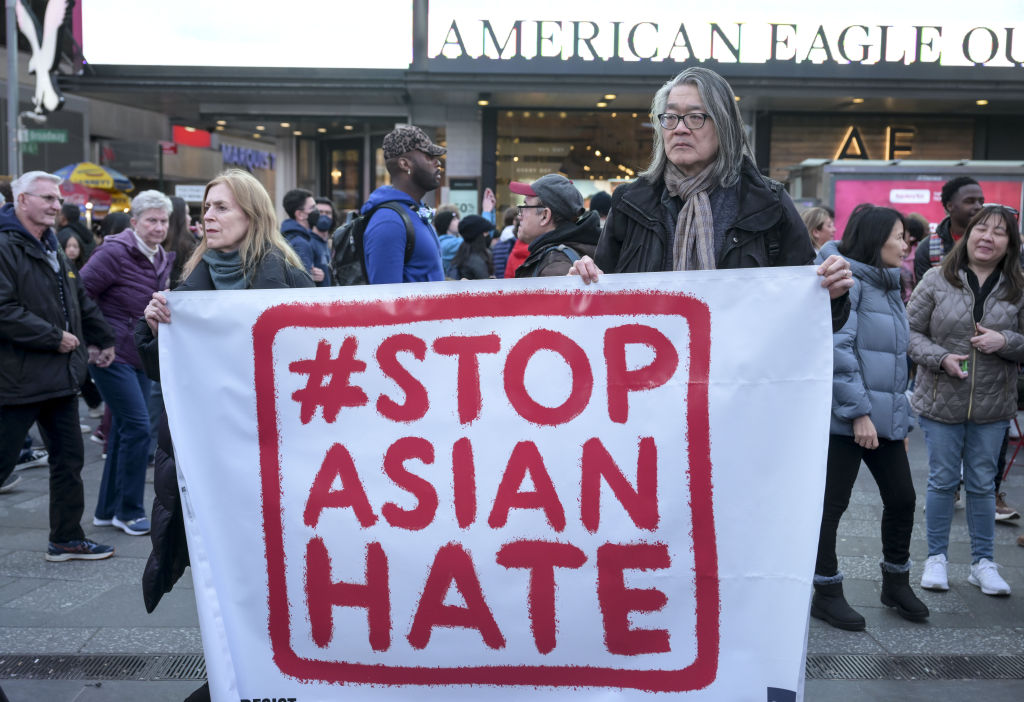We understand that our histories and our futures are tied to one another. This is the core of the AAPI curriculum movement.

Ms. Classroom wants to hear from educators and students being impacted by legislation attacking public education, higher education, gender, race and sexuality studies, activism and social justice in education, and diversity, equity and inclusion programs. Cue: a new series from Ms., ‘Banned! Voices from the Classroom.’ Submit pitches and/or op-eds and reflections (between 500-800 words) to Ms. contributing editor Aviva Dove-Viebahn at adove-viebahn@msmagazine.com. Posts will be accepted on a rolling basis.
In June, a multiracial coalition in Ohio organized a statehouse advocacy day for community members across the state to come and share with their legislators the reasons why they believe in an updated model curriculum and the Educating for Ohio’s Future campaign. The multiracial statewide coalition turned out more than 100 Ohioans who met with 46 members of the state legislature and their representatives. The response was overwhelmingly positive from attendees and legislators on both sides of the aisle.
In Ohio—where we currently stand in a quagmire of a culture war over education—when the coalition approached the public with the question of, “Do our children deserve honest history in schools?” we heard a resounding, “Yes.”
Our nation faces a reckoning on how we move forward in our attempts to build cross-racial, cross-ethnic solidarity, especially in the education space.
Public education in the United States has always been an arena for ideological combat—but as we quickly approach the 2024 presidential election, the right-wing is amping up its attacks. Controlling public education and its content, gutting access to diversity and beneficial curricula, is a top priority for right-wing candidates vying for the top seat of power. We see this effect ripple into all levels of education, from our local schools to universities—and those on the ground are actively fighting it.
There is no AAPI curriculum movement without the inclusion of other marginalized groups. In fact, there is no AAPI history without the histories of other marginalized groups.
Asian Americans and Pacific Islanders (AAPI) are creating a movement to implement accurate and culturally representative curricula in public schools. The majority of Ohioans want this education, and we see this desire echoed nationally. In Illinois, we saw the historic passage of the TEAACH Act in 2021. Similar legislation was passed in New Jersey and Connecticut in 2022—showing a need and desire for inclusive curricula across the country. These education bills encompass a wide array of identities and histories.
We understand that our histories and our futures are tied to one another. This is the core of the AAPI curriculum movement.
There is no AAPI curriculum movement without the inclusion of other marginalized groups. In fact, there is no AAPI history without the histories of other marginalized groups. Yet, not all AAPI advocacy organizations are in consensus. Some are instead opting for a more “palatable” approach, as we saw in Florida’s recent passage of the AAPI curriculum bill at the same time that Gov. Ron DeSantis destroyed access to Black American and LGBTQIA+ inclusion in public schools and higher education.
Some emerging leaders in the AAPI curriculum movement are choosing to lean into and leverage the “model minority” myth as a tool for artificially advancing the AAPI community. As we saw in Florida, it seems politically expedient for white conservative leadership to use the AAPI curriculum bill as a shield against criticism and accusations of racism and anti-Blackness.

However, as stated in a recent open letter from AAPI advocates and community organizations across the country, “We must build, nurture, and deepen relationships with organizations rooted in other communities, rather than race to secure our own victories at the cost of future partnerships and collective wins… An attack on one of us is an attack on all of us.”
As we fight for inclusion, we must also fight the age-old model minority myth that strangles the progress of our movement, and we must remain honest in our public discussions. This is a critical moment for the AAPI community. What will we choose: solidarity, or wedge minority status?
As demonstrated in Ohio and other states engaged in this work, collaborative processes between community groups, educators and their unions, students, community members and state legislators show that there is no need to sanitize our histories and stories for the purpose of fitting into a culture war. We are representatives of our own truths, and our histories and stories belong in our children’s curriculum. We have a right to our governance, as do every other state’s marginalized groups who want to build similar coalitions to enact similar legislation.
There is no need to sanitize our histories and stories for the purpose of fitting into a culture war. We are representatives of our own truths, and our histories and stories belong in our children’s curriculum.
We do not need a national agenda and out-of-state interest groups that push their divisive campaigns onto us in hopes of an ineffective, empty and superficial win they can claim for their funders and resumes. What we need is solidarity action, community empowerment and grassroots organizers at the forefront of this movement. These folks are the experts of their communities, their specific needs and desires, and understand their local political arena to best inform their strategies.
We have already witnessed the power and success of collaborative, community organizing leading this movement across several states. We have always been stronger together, and we will remain strongest in solidarity. This work bands us together in the face of attacks on our communities. Our solidarity across the AAPI community and with other marginalized groups is itself a victory.
If passed, Ohio’s curriculum bill would create a foundation of history that Ohio children have access to, making it far more representative and accurate for the world that they’re about to enter. It sets all children up to reach their full potential. Not only is this foundationally relevant for all children, it cements a high-quality education, improves mental health and belonging, and expands empathy in children.
This is the future for our children of which we dare to dream. And it’s true, “as Ohio goes, so goes the nation.”
Up next:
U.S. democracy is at a dangerous inflection point—from the demise of abortion rights, to a lack of pay equity and parental leave, to skyrocketing maternal mortality, and attacks on trans health. Left unchecked, these crises will lead to wider gaps in political participation and representation. For 50 years, Ms. has been forging feminist journalism—reporting, rebelling and truth-telling from the front-lines, championing the Equal Rights Amendment, and centering the stories of those most impacted. With all that’s at stake for equality, we are redoubling our commitment for the next 50 years. In turn, we need your help, Support Ms. today with a donation—any amount that is meaningful to you. For as little as $5 each month, you’ll receive the print magazine along with our e-newsletters, action alerts, and invitations to Ms. Studios events and podcasts. We are grateful for your loyalty and ferocity.





